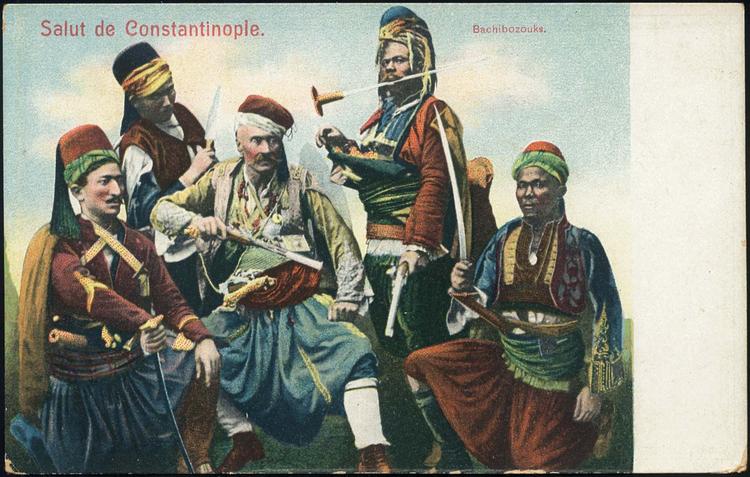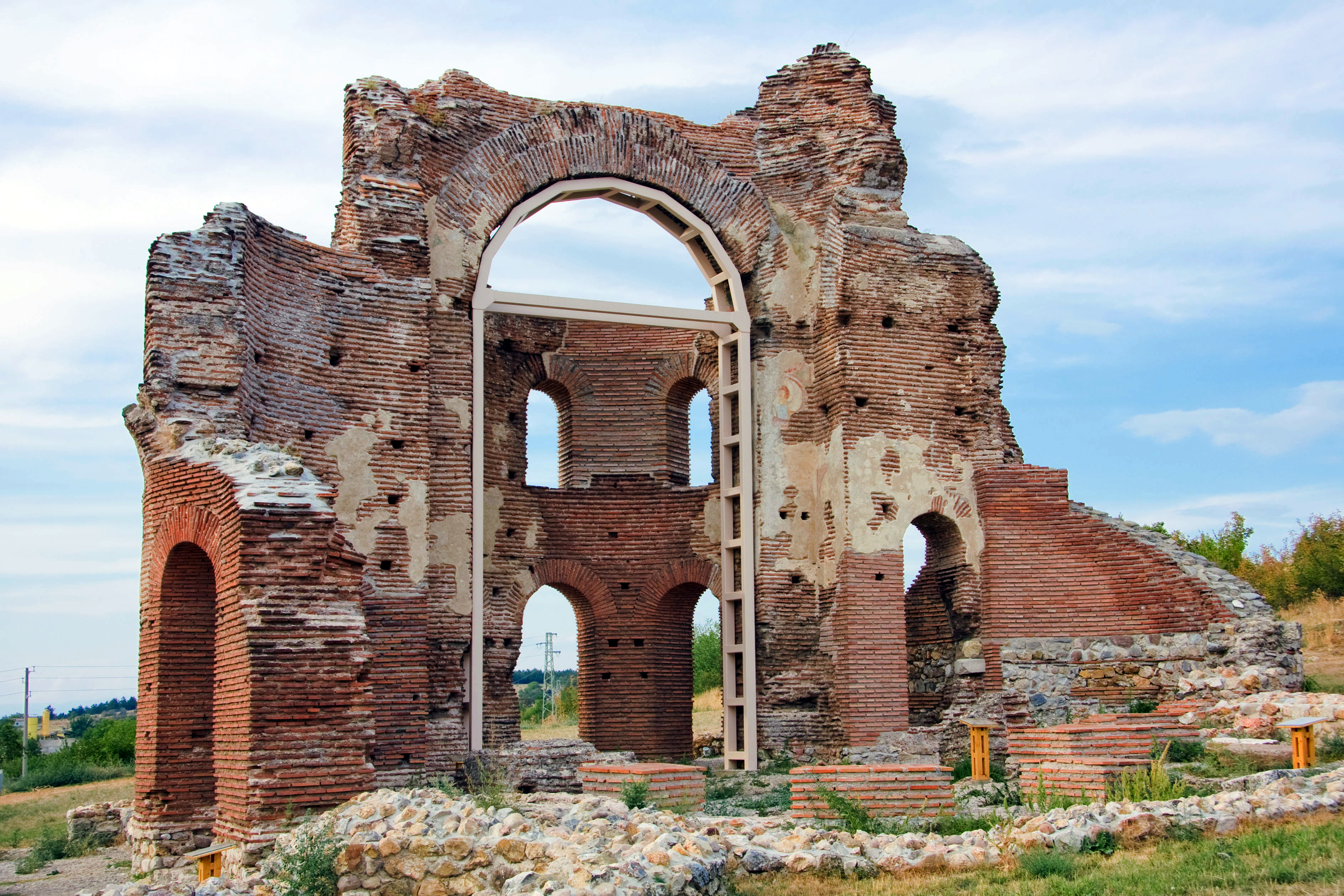|
Perushtitsa Municipality
Perushtitsa ( bg, Перущица ) or Perushtitza is a Bulgarian town located in Perushtitsa Municipality, Plovdiv Province at the foot of the Rhodopes, 22 kilometers south of Plovdiv. The name ''Perushtitsa'' comes from the word ''Peristitsa'', which in turn comes from the name of the God Perun. The town is famous throughout Bulgaria for the fight that took place there in 1876 during the April Uprising against the Ottoman reign. During the suppression of the uprising by Turkish irregulars, the majority of the residents were slaughtered. The French journalist Ivan de Woestyne, who visited the town in July 1876, reported for the newspaper Le Figaro that out of a population of about 2000 only 150 elders and children were left. Lady Strangford arrived from Britain later that year with relief for the people of Bulgaria following the massacres. She built a hospital at Batak and later other hospitals were built including at Perushtitsa. Perushtitsa is one of the few places in ... [...More Info...] [...Related Items...] OR: [Wikipedia] [Google] [Baidu] |
Bashi-bazouk
A bashi-bazouk ( ota, باشی بوزوق , , , roughly "leaderless" or "disorderly") was an irregular soldier of the Ottoman army, raised in times of war. The army chiefly recruited Albanians and Circassians as bashi-bazouks, but recruits came from all ethnic groups of the Ottoman Empire including slaves from Europe or Africa. They had a reputation for bravery, but also as an undisciplined and brutal group, notorious for looting and preying on civilians as a result of a lack of regulation and of the expectation that they would support themselves off the land. Origin and history Although the Ottoman armies always contained mercenaries as well as regular soldiers, the strain on the Ottoman feudal system caused mainly by the Empire's wide expanse required heavier reliance on irregular soldiers. They were armed and maintained by the government, but did not receive pay and did not wear uniforms or distinctive badges. They were motivated to fight mostly by expectations of plun ... [...More Info...] [...Related Items...] OR: [Wikipedia] [Google] [Baidu] |
Towns In Bulgaria
A town is a human settlement. Towns are generally larger than villages and smaller than cities, though the criteria to distinguish between them vary considerably in different parts of the world. Origin and use The word "town" shares an origin with the German word , the Dutch word , and the Old Norse . The original Proto-Germanic word, *''tūnan'', is thought to be an early borrowing from Proto-Celtic *''dūnom'' (cf. Old Irish , Welsh ). The original sense of the word in both Germanic and Celtic was that of a fortress or an enclosure. Cognates of ''town'' in many modern Germanic languages designate a fence or a hedge. In English and Dutch, the meaning of the word took on the sense of the space which these fences enclosed, and through which a track must run. In England, a town was a small community that could not afford or was not allowed to build walls or other larger fortifications, and built a palisade or stockade instead. In the Netherlands, this space was a garden, mo ... [...More Info...] [...Related Items...] OR: [Wikipedia] [Google] [Baidu] |
April Uprising
The April Uprising ( bg, Априлско въстание, Aprilsko vastanie) was an insurrection organised by the Bulgarians in the Ottoman Empire from April to May 1876. The regular Ottoman Army and irregular bashi-bazouk units brutally suppressed the rebels, resulting in a public outcry in Europe, with many famous intellectuals condemning the atrocities—labelled the Bulgarian Horrors or Bulgarian atrocities—by the Ottomans and supporting the oppressed Bulgarian population. This outrage was key for the re-establishment of Bulgaria in 1878. The 1876 uprising involved only those parts of the Ottoman territories populated predominantly by Bulgarians. The emergence of Bulgarian national sentiments was closely related to the re-establishment of the independent Bulgarian Orthodox Church in 1870. Background In Europe, in the 18th century, the classic non-national states were the ''multi-ethnic empires'' such as the Ottoman Empire and the Austro-Hungarian Empire, whose p ... [...More Info...] [...Related Items...] OR: [Wikipedia] [Google] [Baidu] |
Red Church (Bulgaria)
The Red Church ( bg, Червена църква, ''Chervena tsarkva'', ) is a large partially preserved late Roman (early Byzantine) Christian basilica In Ancient Roman architecture, a basilica is a large public building with multiple functions, typically built alongside the town's forum. The basilica was in the Latin West equivalent to a stoa in the Greek East. The building gave its name ... in south central Bulgaria. Dating to the late 5th–early 6th century, the church stands near the town of Perushtitsa in western Plovdiv Province, some southwest of the city of Plovdiv. The Red Church is a rare example of solid brick construction in a church from Late Antiquity in Bulgaria, and it was the red colour of the bricks that gave the church its name. History and architecture Probably built under Emperor Anastasius I (emperor), Anastasius I (491–518), the Red Church originally measured . The northern wall, the best preserved, reaches around in height. The church feature ... [...More Info...] [...Related Items...] OR: [Wikipedia] [Google] [Baidu] |
Mavrud
Mavrud (, from Greek, μαυρό ''(mavró)'', "black") is a red wine grape that is used as both a blending grape and for varietal wines, indigenous to the Balkan region. It's growing in some regions in Albania, Thrace region in Bulgaria, some regions in Greece and in Romania. The grape has been described as a characterful, low- yielding, small-berried and late-ripening grape capable of producing tannic, spicy wine with a potential for ageing. History Regarded as one of the most highly esteemed local wines, Mavrud vineyards are mainly found around Asenovgrad and Perushtitsa, as well as more rarely near Pazardzhik, Stara Zagora and Chirpan. There is speculation amongst grape growers that Mavrud may be an ancient clone of Mourvedre, imported into Bulgaria by the Romans. Legend A legend that the oenophiles of the Mavrud wine like to repeat in order to explain the restoration of this locality as wine-growing country was that during the reign of Khan Krum of Bulgaria, all vineyar ... [...More Info...] [...Related Items...] OR: [Wikipedia] [Google] [Baidu] |
Batak, Bulgaria
Batak ( bg, Батак ) is a town in Pazardzhik Province, Southern Bulgaria, not far from the town of Peshtera. It is the administrative centre of the homonymous Batak Municipality. As of December 2009, the town has a population of 3,498 inhabitants.Bulgarian National Statistical Institute - towns in 2009 Geography Batak is situated in the northwestern slopes of the , at 1036 m above sea level. It is surrounded by many peaks, clad with century-old pine and spruce forests. The climate is temperate continental with a characteristic southern warm wind. Batak was pronounced town in 1964 and has a pop ...[...More Info...] [...Related Items...] OR: [Wikipedia] [Google] [Baidu] |
Lady Strangford
Lady Strangford, Emily Ann Smythe or Emily Anne Beaufort (1826 – 24 March 1887) was a British illustrator, writer and nurse. There are streets named after her and permanent museum exhibits about her in Bulgaria. She established hospitals and mills to assist the Bulgarians following the April Uprising in 1876 that preceded the re-establishment of Bulgaria. She was awarded the Royal Red Cross medal by Queen Victoria for establishing another hospital in Cairo. Life Emily Anne Beaufort was born in St Marylebone and baptised in April 1826. Her parents were Admiral Sir Francis Beaufort and his wife Alice. Her father gave his name to the Beaufort Scale. In 1858 she set out on a journey with her elder sister to Egypt.Elizabeth Baigent, 'Strangford , Emily Anne, Viscountess Strangford (bap. 1826, d. 1887)', ''Oxford Dictionary of National Biography'', Oxford University Press, 200accessed 2 May 2015/ref> The book that she wrote, ''Egyptian Sepulchres and Syrian Shrines'' was dedicate ... [...More Info...] [...Related Items...] OR: [Wikipedia] [Google] [Baidu] |
Paris
Paris () is the capital and most populous city of France, with an estimated population of 2,165,423 residents in 2019 in an area of more than 105 km² (41 sq mi), making it the 30th most densely populated city in the world in 2020. Since the 17th century, Paris has been one of the world's major centres of finance, diplomacy, commerce, fashion, gastronomy, and science. For its leading role in the arts and sciences, as well as its very early system of street lighting, in the 19th century it became known as "the City of Light". Like London, prior to the Second World War, it was also sometimes called the capital of the world. The City of Paris is the centre of the Île-de-France region, or Paris Region, with an estimated population of 12,262,544 in 2019, or about 19% of the population of France, making the region France's primate city. The Paris Region had a GDP of €739 billion ($743 billion) in 2019, which is the highest in Europe. According to the Economist Intelli ... [...More Info...] [...Related Items...] OR: [Wikipedia] [Google] [Baidu] |
Le Figaro
''Le Figaro'' () is a French daily morning newspaper founded in 1826. It is headquartered on Boulevard Haussmann in the 9th arrondissement of Paris. The oldest national newspaper in France, ''Le Figaro'' is one of three French newspapers of record, along with ''Le Monde'' and ''Libération''. It was named after Figaro, a character in a play by polymath Beaumarchais (1732–1799); one of his lines became the paper's motto: "''Sans la liberté de blâmer, il n'est point d'éloge flatteur''" ("Without the freedom to criticise, there is no flattering praise"). With a centre-right editorial line, it is the largest national newspaper in France, ahead of ''Le Parisien'' and ''Le Monde''. In 2019, the paper had an average circulation of 321,116 copies per issue. The paper is published in Berliner format. Since 2012 its editor (''directeur de la rédaction'') has been Alexis Brézet. The newspaper has been owned by Dassault Group since 2004. Other Groupe Figaro publications include ''Le ... [...More Info...] [...Related Items...] OR: [Wikipedia] [Google] [Baidu] |
Ivan De Woestyne
Ivan () is a Slavic male given name, connected with the variant of the Greek name (English: John) from Hebrew meaning 'God is gracious'. It is associated worldwide with Slavic countries. The earliest person known to bear the name was Bulgarian tsar Ivan Vladislav. It is very popular in Russia, Ukraine, Croatia, Serbia, Bosnia and Herzegovina, Slovenia, Bulgaria, Belarus, North Macedonia, and Montenegro and has also become more popular in Romance-speaking countries since the 20th century. Etymology Ivan is the common Slavic Latin spelling, while Cyrillic spelling is two-fold: in Bulgarian, Russian, Macedonian, Serbian and Montenegrin it is Иван, while in Belarusian and Ukrainian it is Іван. The Old Church Slavonic (or Old Cyrillic) spelling is . It is the Slavic relative of the Latin name , corresponding to English ''John''. This Slavic version of the name originates from New Testament Greek (''Iōánnēs'') rather than from the Latin . The Greek name is in turn ... [...More Info...] [...Related Items...] OR: [Wikipedia] [Google] [Baidu] |

.jpg)





